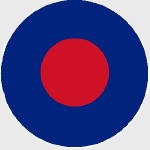Hobby Master HA2652 Royal Navy Harrier GR Mk.9 Jump Jet - ZD406, Royal Navy Strike Wing, RAF Station Cottesmore, England, 2009 (1:72 Scale)
"Obsolete weapons do not deter."
- British Prime Minister Margaret Thatcher
 The AV-8B Harrier II is a second generation vertical short takeoff and landing (V/STOL) aircraft based on the original British Harrier design of the late 1960's. Combining tactical mobility, responsiveness, reduced operating cost, and basing flexibility -- both afloat and ashore -- V/STOL aircraft are well-suited to the special combat and expeditionary requirements of the US Marine Corps.
The AV-8B Harrier II is a second generation vertical short takeoff and landing (V/STOL) aircraft based on the original British Harrier design of the late 1960's. Combining tactical mobility, responsiveness, reduced operating cost, and basing flexibility -- both afloat and ashore -- V/STOL aircraft are well-suited to the special combat and expeditionary requirements of the US Marine Corps.
The primary mission of the AV-8B Harrier II is to provide close air support to ground forces. Secondary missions include short range interdiction, fighter escort, deck launched interception, and combat air patrol (CAP).
After completing operational evaluation trials in March 1985, the USMC AV-8B Harrier II was formally approved for full production some six months later. A two-seat training version was introduced in 1987 and a night attack version entered service in late 1989.
Pictured here is a 1:72 scale RAF Harrier GR Mk.9A jump jet that was attached to the Royal Navy Strike Wing, then deployed to RAF Station Cottesmore, England, during 2009.
Pre-order! Ship Date: March 2025.
Dimensions:
Wingspan: 5-inches
Length: 7-3/4-inches
Release Date: ?
Historical Account: "Up, Up and Away" - The Fast Jet and Weapons Operational Evaluation Unit (FJWOEU) was formed before it assumed the 41 Squadron number plate. It was created on April 1st, 2004, from the merger of the Strike Attack OEU (SAOEU), the F3 OEU, and the Air Guided Weapons OEU (AGWOEU). The FJWOEU took over 41(F) Squadron's number plate on April 1st, 2006, rescuing 41 Squadron from disbandment that would have otherwise resulted from the retirement of the RAF's Jaguar fleet.
Their new aircraft consisted of Panavia Tornados and Harrier GR9s, and that same year, the squadron celebrated its 90th anniversary. It remained in the role of FJWOEU until 2010, during that time testing numerous weapons and defence systems that were subsequently deployed by British forces on the front line at various locations throughout the world, including Afghanistan.
Test and Evaluation Squadron, 2010 to present.
On April 1st, 2010, the Fast Jet Test Squadron (FJTS), then based at Boscombe Down in Wiltshire, was amalgamated into No.41(Reserve) Squadron to create a new entity, 41 Squadron Test and Evaluation Squadron, or '41(R) TES', in which form it continues today.
In September 2010, the squadron celebrated the 70th anniversary of the Battle of Britain, holding an event at RAF Coningsby attended by families of pilots of the World War II era. The squadron painted its current aircraft with World War II-era 'EB' codes, recognizing various World War II pilots and their aircraft. Originally, some of these codes were applied to the squadron's Harriers, but when these were retired, the codes were then applied to the Squadron's Tornados, and subsequently Typhoons, that replaced them. They currently commemorate the following World War II aircraft.
Wingspan: 5-inches
Length: 7-3/4-inches
|


